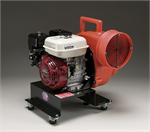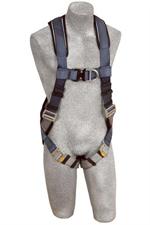|
Safe today: ventilation blowers, meters

The movie "Rudy" recounts the true story of Rudy Ruettiger who, against all odds, left steel-mill town Joliet, Illinois, and persevered his way onto the Notre Dame football field. Significantly, the movie includes the tragic loss of Rudy's best friend who works in the mill. A sudden blast of flame knocks him from the scaffolding, killing him; it's this event that cements Rudy's decision to head to Notre Dame. The movie's backdrop shows life in a steel mill town in the early 1970s: the inherent danger that was part of life. Now, over thirty-five years later, various gas detection equipment like gas detection meters reduce the chances of the kind of accident that killed Rudy's young friend, and regulations that demand viable response to the presence of harmful gases, like use of ventilation blowers, prevent the loss of life every day.
Early steel and the fall protection harness

The steel mill of Ruettiger's story, in Joliet, Illinois, was at the end of its long life in the Chicago area, where steel production had accounted for a large portion of U.S. steel production for over seventy years. Ruettiger's father worked in what was once the Joliet Iron and Steel Company, which opened in 1871. Steel rails were produced by this and two other Chicago plants, made of the iron ore deposits from the Lake Superior region. In 1901, the Joliet mill, then Illinois Steel, was swallowed by U.S. Steel, the most important development in the history of the steel industry. It was the world's largest business enterprise at the time. Unions were forming by then, and the safety provided by ventilation blowers and the fall protection harness can be traced to the men who fought for fair wages and fair treatment many years before.
Unions: gas detection meters, etc.
Today's industrial workers have safety tools that were unavailable to the union workers who began organizing in the 1870s. In fact, it was a long time before the steel industry agreed to union demands for an eight hour day in 1923, and that was really due to public pressure and input from President Harding more than to union efforts. However, it was a big step toward the kind of fair wages and treatment, not to mention safety standards that exist today, that call for tools like gas detection meters, and that keep laborers safe with the fall protection harness.
|
|